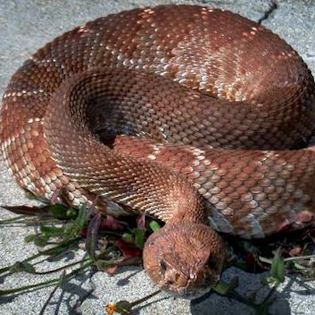 Modern medical science, despite having some areas in which it could stand considerable improvement, is still quite amazing when contrasted with how little our ancestors knew about the workings of the human body. When we are curious about a particular condition, we often can get reasonably detailed, fact-based information about what it is and the processes involved.
Modern medical science, despite having some areas in which it could stand considerable improvement, is still quite amazing when contrasted with how little our ancestors knew about the workings of the human body. When we are curious about a particular condition, we often can get reasonably detailed, fact-based information about what it is and the processes involved.
I sometimes have ocular migraines, which are painless disturbances of vision that last about a half-hour. The specifics of them differ from one person to another. Mine looks like a bright flickering band of triangular patterns crossing my field of vision, resembling a rattlesnake in glowing colors. It’s really quite pretty, although it’s inconvenient because I can’t drive or use the computer until it goes away. Or to frame it more positively, one might say that it is an enforced break from the things of modern life, an opportunity for quiet reflection.
Once upon a time, in a prehistoric tribal society, it’s likely that I would have believed a rattlesnake spirit was visiting me to teach important lessons about my life. A shaman probably would have told me that it was magical and that I was blessed. I would have taken for granted that the rattlesnake really existed because I saw it. Long ago, people did not differentiate between their subjective experiences and the physical world to the extent they do now. Traces of this way of thinking can still be found in a modern autistic person’s tendency toward abstract contemplation and love for patterns, as Andrew Lehman wrote in his post Superstition and Obsession:
The way autistics process the world is the way we all thought when we were all group dancers and musicians gesturing our encouragements to the dancing band. The me/every had not differentiated into the me and the other. Story had not yet emerged. Abstract thinking was still so abstract that metaphor had not developed into a thing and what a thing represented. For example, a dancer representing thunder was thunder. The world had not yet broken down into parts. There was only everything, connected, and a compulsion to recognize connection, to acknowledge connection and to reproduce connection.
In many ways, we are fortunate to be living in a world with advanced technology and a more mature understanding of science. Our homes are more comfortable, food is more easily available, medical professionals can treat many of our ailments, and we live much longer. Still, I sometimes think that perhaps we’ve gone too far in leaving behind the wonder that our ancestors felt when they looked at natural phenomena they did not understand. From a factual standpoint, we understand much more about our world, and we’ve created many things they never could have imagined; but we feel less connected to our world, with less of an intuitive sense of where we fit into its patterns. Science has displaced our childlike capacity to be amazed by life’s mysteries.
Even now, there should be a place in our world for the rattlesnake spirit and its kindred. Instead of being cast aside as useless relics of primitive times, they ought to live happily and productively on in the realm of imagination—that is, the realm of art, play, and myth. Even if they are not real in the sense that our ancestors would have understood them to be, they can teach us valuable lessons about our lives nonetheless.
Gwen McKay on 09/1/10 in Art/Play/Myth, featured | 3 Comments | Read More
Comments (3)


Beautiful, beautiful post! I just love it.
Although shamanic thinking lies in discredit in our relentlessly scientific culture, it still exists in indigenous cultures all over the world, where shamans are respected as the carriers of knowledge and wisdom in the same way that our culture respects professors at MIT and the Sorbonne. There’s a wonderful book called “The Cosmic Serpent” by Jeremy Narby, in which the author posits that the image of coiling snakes, present in indigenous cultures throughout the world, actually represents an auditory and visual experience of DNA strands that shamans use to learn the healing properties of the natural world. The author himself had an experience of “talking snakes” during his research as an anthropologist in Peru. His theory is that DNA is a substance that is both in self and in all, internal and external, microscopically small and phenomenally large, and thus a paradox that transcends the self/other dualistic thinking of western civilization. It’s an engaging and (to me) wholly convincing book. It also got me thinking about why in the Jewish shamanic tradition the snake is the trickster animal that brings transformation and healing, and why in that tradition, a separation between the physical and the spiritual simply does not exist. (Like other shamanic paths, the Jewish shamanic tradition is still alive and well, although not well known.)
A fascinating shaman/autism story - though not directly related to your post, in the same vein: http://entertainment.timesonline.co.uk/tol/arts_and_entertainment/books/article5779851.ece
Thank you both for your comments! I believe it’s fair to say that when shamans talk about snakes and other animal images, they can give people useful insights in much the same way as when psychoanalysts talk about the meaning of dreams, and they should indeed be respected for their wisdom.